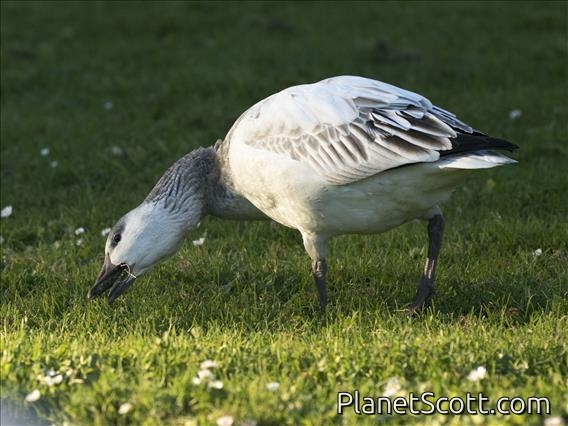Snow Goose (Anser caerulescens)

Snow Goose (Anser caerulescens)
×


Snow Goose (Anser caerulescens)
About Snow Goose (Anser caerulescens)
- Kingdom: Animals
- Phylum: Chordates
- Class: Birds
- Order: Anseriformes
- Family: Swans, Geese, and Ducks
The snow goose is a species of goose native to North America. Both white and dark morphs exist, the latter often known as blue goose. Its name derives from the typically white plumage. The species was previously placed in the genus Chen, but is now typically included in the "gray goose" genus Anser.
Source: Wikipedia
Visits
-
2003-12-15
Sacramento National Wildlife Refuge, United States of AmericaHuge clouds of these birds in the main feeder ponds. -
2008-12-06
Colusa National Wildlife Refuge, United States of America -
2009-11-07
Pinnacles National Monument, United States of AmericaV-Shaped Flock flying high over campground. -
2010-01-03
Sacramento National Wildlife Refuge, United States of America -
2013-03-06
Fermilab, United States of America -
2013-04-19
Anahuac NWR (UTC 049), United States of America -
-
-





